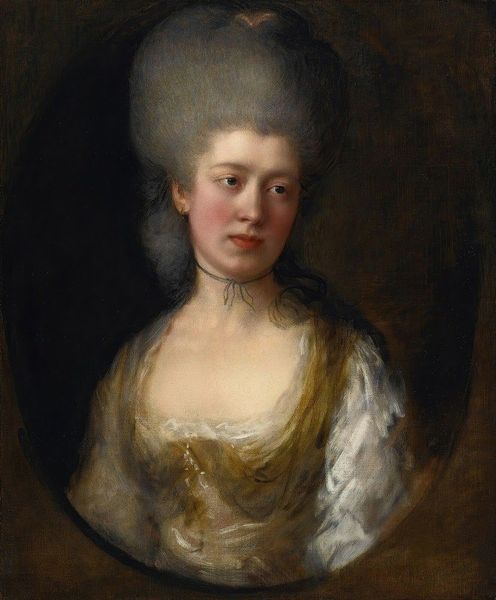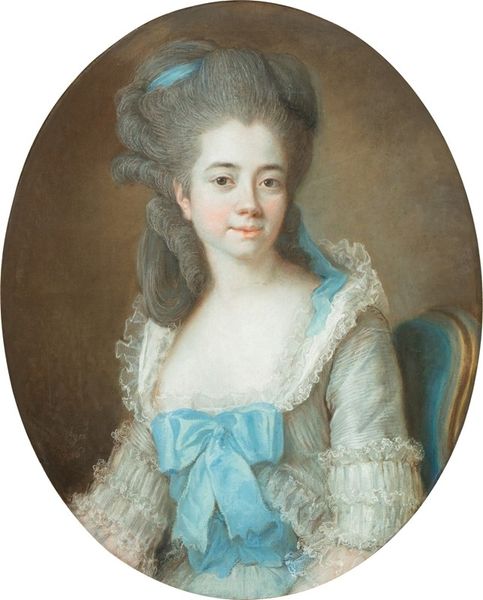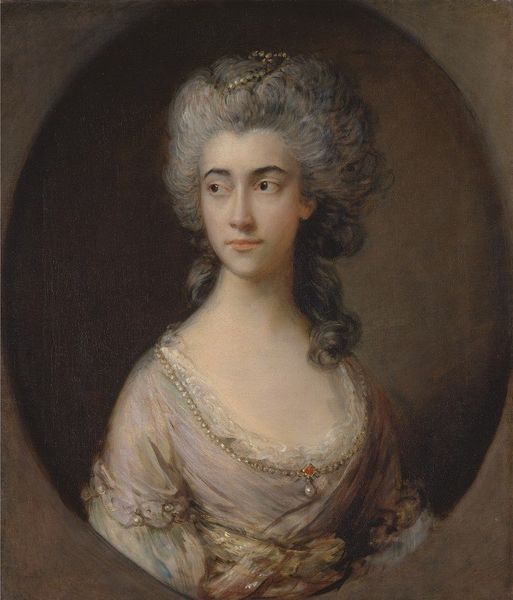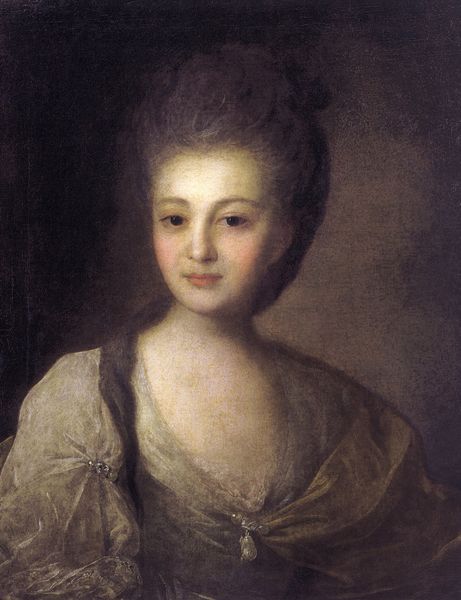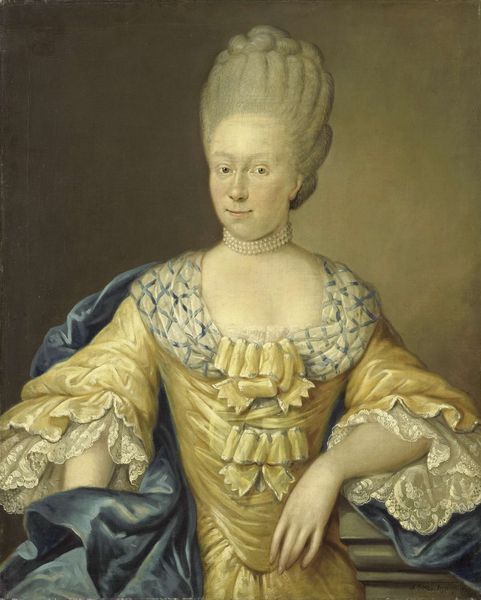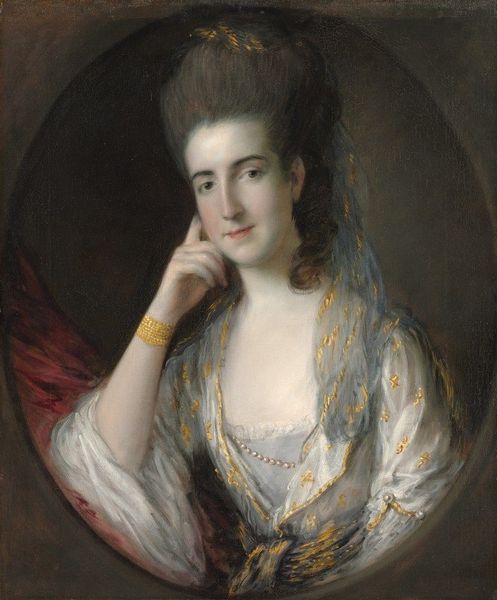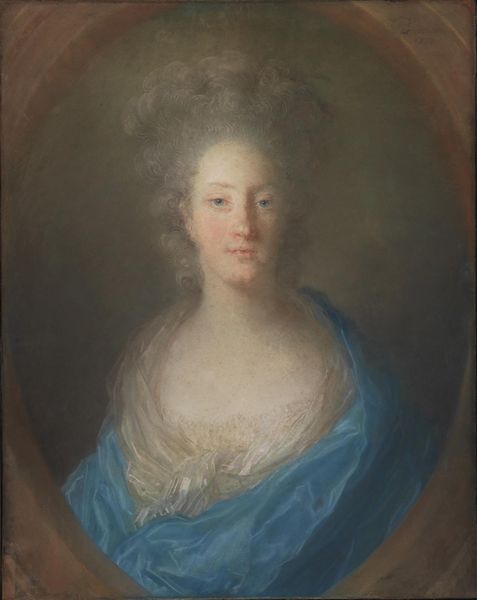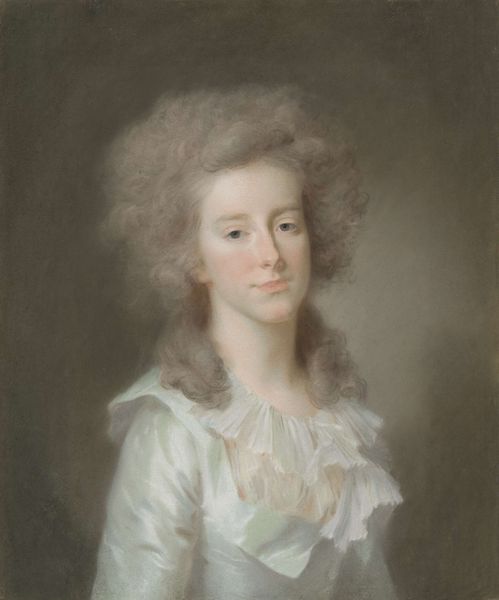
Copyright: Public Domain: Artvee
Curator: Standing before us is Thomas Gainsborough's "Mrs. Paul Cobb Methuen," painted circa 1776-1777. Editor: The overwhelming impression is one of fragility, isn’t it? The pale skin against the dark background, the almost ethereal fabric… she seems ready to vanish. Curator: Interesting observation. What strikes me immediately is the material extravagance. Look at the details of her dress; that delicate lace trimming, the pearl embellishments, it all speaks to the cost and the labor involved in its production. These signifiers broadcast her elevated status, beyond the basic symbolism of class in the clothing and subject matter itself. Editor: Yes, but it is not only the cost. Those pearls also connote purity, and the almost translucent fabric gives a sense of innocence or, perhaps more cynically, of someone playing the role of innocence. It reflects how women were idealized or constrained within these prescribed images. The whole visual statement plays out ideas about beauty, femininity, and, yes, social standing. Curator: Absolutely. The Rococo and Romantic elements merge to highlight these constructs. How deliberate are we thinking that lace placement, in a pre-industrial world where every inch involved painstaking handiwork. This isn't mass production; it is intensely personal, and it reinforces the notion of luxury. One wonders what Mrs. Methuen thought about her portrayal; this required so many people's skill to produce. Editor: And not to forget the towering hairstyle. It echoes a specific time, too—an era on the brink of change. A flamboyant excess perched precariously atop her head, which is a literal representation of fleeting trends in that era! What it means and symbolized during that period. I guess this portrait shows this fragility, beauty, but also temporality through its symbolism. Curator: So we move beyond aesthetic appreciation towards understanding the material realities behind its creation, which makes it possible to reassess its meanings today. It goes past aesthetics to acknowledge production means and economic disparity back then. Editor: Exactly. Now, looking again, the symbolism takes on a sharper, more critical edge for me. A dialogue between representation and a glimpse of the historical forces and events shaping how identity was then seen, understood and enforced in paintings.
Comments
No comments
Be the first to comment and join the conversation on the ultimate creative platform.
